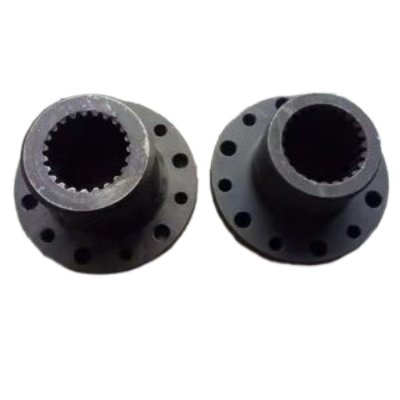
Customized sand casting parts
Sand casting, known as sand moulded casting, is a metal casting process using sand as the mould material. More than half of metal castings are produced by sand casting. It is a relatively cheap and efficient method of forming metal materials. Basically, sand casting process is comprised of five steps: patternmaking, moulding, melting, pouring, and cleaning.
•Patternmaking: patterns are placed in sand to create a mould. Patterns are designed for specific products and can be easily withdrawn from the mould. The patterns create cavity for molten metal to form the castings.
•Moulding: moulding is the operation process to prepare a mould for receiving metal. It consists of ramming sand around the pattern, removing the pattern, setting cores, and creating the gating and feeding system.
•Melting and Pouring: metals are heated to certain temperature and adjusted to proper compositions before pouring into the cavity via gating and feeding system.
•Cleaning: all the gates and risers that constitute the gating and feeding system are removed from the casting. Adhering sand, fins, and other foreign materials are removed before inspection and shipment.
Customized sand casting parts
Sand casting, known as sand moulded casting, is a metal casting process using sand as the mould material. More than half of metal castings are produced by sand casting. It is a relatively cheap and efficient method of forming metal materials. Basically, sand casting process is comprised of five steps: patternmaking, moulding, melting, pouring, and cleaning.
•Patternmaking: patterns are placed in sand to create a mould. Patterns are designed for specific products and can be easily withdrawn from the mould. The patterns create cavity for molten metal to form the castings.
•Moulding: moulding is the operation process to prepare a mould for receiving metal. It consists of ramming sand around the pattern, removing the pattern, setting cores, and creating the gating and feeding system.
•Melting and Pouring: metals are heated to certain temperature and adjusted to proper compositions before pouring into the cavity via gating and feeding system.
•Cleaning: all the gates and risers that constitute the gating and feeding system are removed from the casting. Adhering sand, fins, and other foreign materials are removed before inspection and shipment.
Customized sand casting parts
Sand casting, known as sand moulded casting, is a metal casting process using sand as the mould material. More than half of metal castings are produced by sand casting. It is a relatively cheap and efficient method of forming metal materials. Basically, sand casting process is comprised of five steps: patternmaking, moulding, melting, pouring, and cleaning.
•Patternmaking: patterns are placed in sand to create a mould. Patterns are designed for specific products and can be easily withdrawn from the mould. The patterns create cavity for molten metal to form the castings.
•Moulding: moulding is the operation process to prepare a mould for receiving metal. It consists of ramming sand around the pattern, removing the pattern, setting cores, and creating the gating and feeding system.
•Melting and Pouring: metals are heated to certain temperature and adjusted to proper compositions before pouring into the cavity via gating and feeding system.
•Cleaning: all the gates and risers that constitute the gating and feeding system are removed from the casting. Adhering sand, fins, and other foreign materials are removed before inspection and shipment.